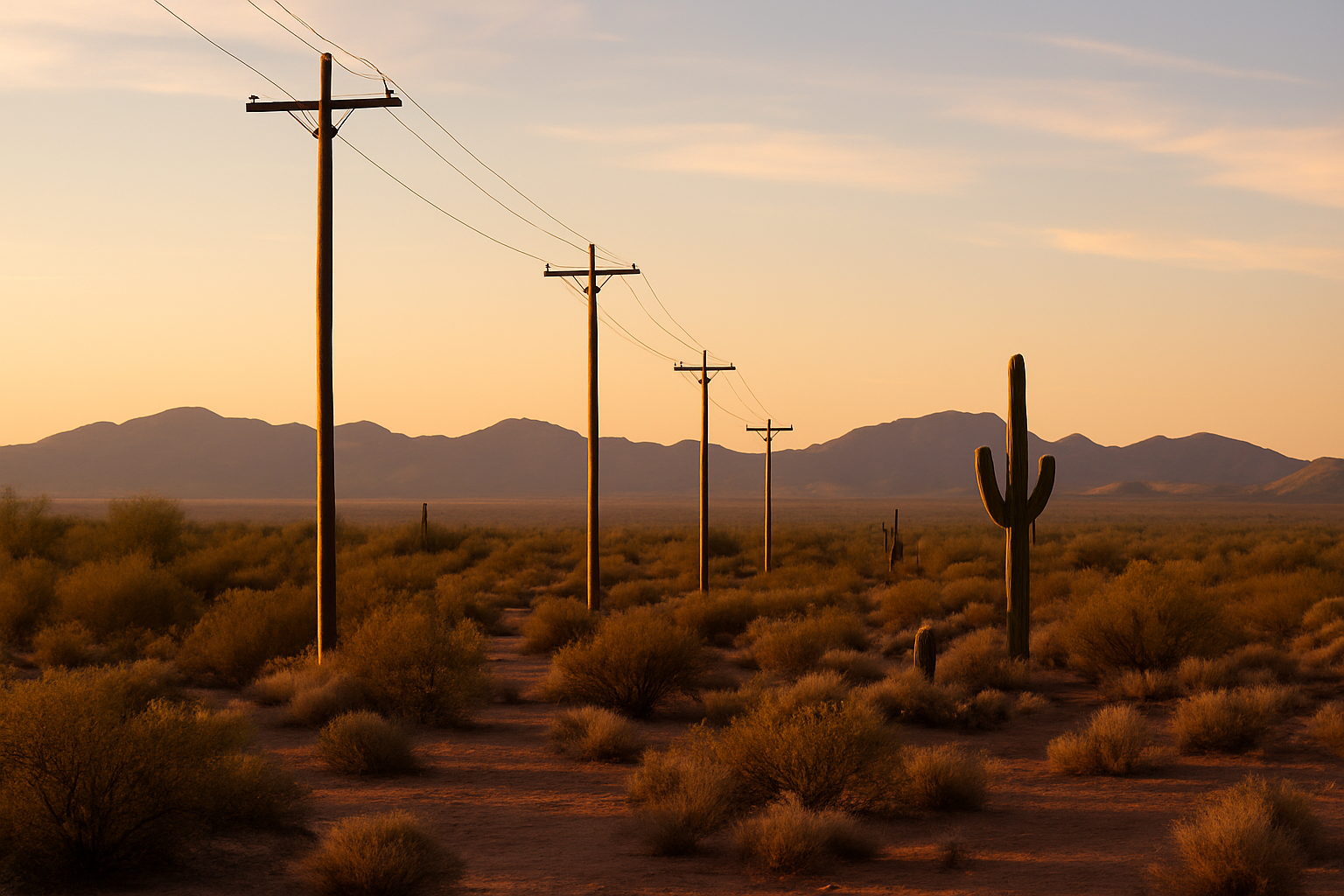
When two parcels of land look nearly identical on paper but only one gains traction, it’s not chance. It’s usually the setup behind the scenes: where the power lines run, how the land lays, whether the road access is usable, and what it would really take to build.
In Arizona especially, these small differences make a big impact. Power, infrastructure, and how a property is positioned all play a role in how land is perceived, and whether it actually moves when it hits the market.
If you’ve ever wondered why your land is drawing silence while another piece down the road gets snapped up, this might help bring some clarity.
Most buyers ask one of the same first questions:
“Is there power?”
And by power, they mean electricity. Having it nearby is one thing — but being able to actually connect to it? That’s another.
Here’s what that really means:
If your land sits near power lines, that’s a good start
But getting electricity to the property might require poles, permits, and sometimes thousands of dollars in new line work
Utility providers like APS, SRP, or smaller co-ops all have their own rules
So when a buyer sees “near power” on a listing, they’re still thinking: How far? How much? How fast?
That’s why land with existing power access, even just a meter on-site, often feels like a safer, faster move. It gives clarity, not questions.
When we say infrastructure, we’re talking about what makes land usable.
This includes three big things:
– Roads
– Water
– Septic or sewer
Here’s how each plays a role:
➤ Road Access
Having legal ownership or permission to access your land is important, but physical access matters too.
A legal easement means you can go through, but it might just be a dirt trail
If there’s no road at all, or it’s hard to reach by vehicle, many buyers will hesitate
➤ Water
Some properties have a well already installed, that’s ideal.
Others may require water to be hauled in or a well to be drilled, which can cost $10,000–$30,000 depending on the depth.
Public (city or county) water isn’t common for rural parcels. Most land in Arizona relies on private wells or water hauling services.
➤ Septic or Sewer
If a property isn’t on a city sewer line, and most aren’t, it will likely need a septic system.
To install one, you need to pass a perc test (short for percolation test) to make sure the soil drains well.
No one expects raw land to be fully prepped, but buyers are often asking:
“What will it take to get this ready?”
The easier that answer is, the more likely the land moves.
A lot of people think land value is all about location — but two parcels in the same area can perform very differently. Why? Because how the land is positioned makes a difference.
Here’s what that means:
➤ Shape and Layout
A square or rectangular lot is usually easier to use than a narrow or oddly shaped one
Flag lots (with a long skinny “handle”) can limit building space or access
If the land is too narrow, it may not meet minimum zoning widths to build
➤ Topography
A flat parcel is easier to build on than one with steep slopes or natural washes
Flood zones may require special permits or extra foundation work
Rocks, dips, and washes can reduce usable acreage
➤ Zoning and Future Use
Zoning tells you what can legally be built — homes, farms, businesses, etc.
If your land is zoned for one home per acre, but it’s a 10-acre lot, that could be a big opportunity
But if it’s zoned tightly or surrounded by protected areas, it may be more limited
These factors don’t make land “bad,” they just shape its story.
And parcels with a clearer, more flexible path forward tend to move quicker.
If your land hasn’t moved yet, don’t assume it’s the market, it might just need a closer look.
Buyers today want clarity. They want to know what they’re stepping into.
Land that feels positioned, prepared, and understood gets more attention, and often stronger offers.
And even if you’re not looking to sell right now, knowing your land’s setup helps you move with confidence when the time comes.
If you’d like a second set of eyes on your land, zoning, access, or overall readiness, I’m always happy to share what I see.

Empyrean Development
Boutique land strategy for Arizona visionaries.
3104 E Camelback Rd #2068
Phoenix, AZ 85016
United States
Remotely Working in Arizona
Connect@empyreandevelopmentbyshema.com
480-475-0629
LinkedIn

Empyrean Development is Arizona’s trusted land due diligence consultant. I help landowners, investors, and agents with zoning research, feasibility reports, and strategic support to make smart land decisions.
Need to send me something?
3104 E Camelback Rd #2068
Phoenix, AZ 85016
United States
Remotely Working in Arizona
Connect@empyreanbyshema.com
480-475-0629
LinkedIn
This website is owned and operated by Empyrean Development by Shema, a registered LLC.
© 2025 Empyrean Development. All rights reserved.